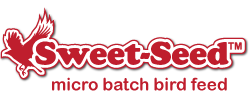Attract More Birds: The Incredible, Edible Mulberry

What is a mulberry, you ask? Well, according to Gilbert H. Trafton, in his book Methods of Attracting Birds, “the best all around fruit (for attracting birds) is the mulberry, either white or Russian.”
Click here to view Trafton's feeding chart.
Further, “A Bulletin of the U.S. Department of Agriculture, by W.L. McAtee, on “Plants Useful to Attract Birds and Protect Fruit,” gives a list of food bearing trees and shrubs in what is thought to be the order of their attractiveness to the largest variety of birds: elder(berry), raspberry and blackberry, mulberry, dogwood, sumach, wild cherry, blueberry, juniper, service berry, holly, strawberry, viburnum, hackberry, huckleberry, haw, spice bush, rose, sarsaparilla, sour gum, gooseberry, currants, snow-berry.” *
Want to plant your very own mulberry tree?
The white mulberry tree was introduced into America from Asia for silkworm culture in early colonial times. The red or “American mulberry” is native to eastern United States from Massachusetts to Kansas and down to the Gulf coast. But, it is the white mulberry which is the most cold-hardy of the species, with some trees reported as withstanding -25° F temperatures unfazed.
Due to its heartiness, planting a mulberry tree is a great natural feeding option in most all of the United States. Some white mulberry trees can grow to 80-feet, so keep this in mind and allow ample room (at least 15 feet between trees) for them to stretch their legs.
Want to harness the wild bird attracting “powers” of the mulberry, but not a “green thumb?”
While very few commercial bird feeds contain mulberries, you can always add them to a blend or mix your own at home.
Sweet-Seed™ also has a number of options, including ultra-premium blends that include ingredients such as the mulberry. Or, create your very own custom mulberry seed concoction with the Custom Blend Builder.
Either way, including mulberries in the feed you offer to your backyard birds will only enhance the number and variety of species for you to view at your feeders.
*From “Propagation of wild birds, a manual of applied ornithology…” by Herbert Keightley Jobs:
Click here to read the book for free!
Herbert Keightley Job (1864-1933), minister, lecturer, author, ornithologist, and pioneer wildlife photographer, was born in Boston, Massachusetts. Between 1908 and 1914, he served as State Ornithologist of Connecticut and member of the faculty of the Connecticut Agricultural College (today, University of Connecticut, Storrs), 1908-1914 and between 1914-1924, he was economic ornithologist in charge of the Department of Applied Ornithology.. Between 1926 and 1930, he was Field Agent for South Carolina of the National Association of Audubon Societies and State Director of Nature Conservation Education, South Carolina.
Image by Kadir Kritik from Pixabay
